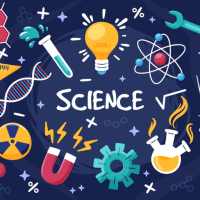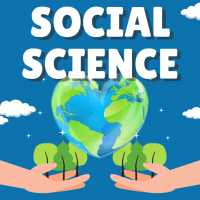Class 10 Exam > Class 10 Questions > Explain the Respiration with with the appropr...
Start Learning for Free
Explain the Respiration with with the appropriate diagram and flowchart?
Most Upvoted Answer
Explain the Respiration with with the appropriate diagram and flowchar...
Certainly! Below is a detailed explanation of respiration, complete with a flowchart and diagram.
What is Respiration?
Respiration is a biochemical process in which cells convert glucose and oxygen into energy, carbon dioxide, and water. This process is essential for maintaining life in organisms.
Types of Respiration
- Aerobic Respiration
- Occurs in the presence of oxygen.
- Produces a large amount of energy (about 36-38 ATP).
- Example: Glucose + Oxygen → Carbon Dioxide + Water + Energy.
- Anaerobic Respiration
- Occurs in the absence of oxygen.
- Produces less energy (about 2 ATP).
- Example: Glucose → Lactic Acid + Energy (in animals) or Glucose → Ethanol + Carbon Dioxide + Energy (in yeast).
Stages of Aerobic Respiration
1. Glycolysis
- Occurs in the cytoplasm.
- Breaks down glucose into pyruvate, generating 2 ATP.
2. Krebs Cycle
- Takes place in the mitochondria.
- Converts pyruvate into carbon dioxide, producing electron carriers (NADH, FADH2) and ATP.
3. Electron Transport Chain
- Also in the mitochondria.
- Uses electron carriers to produce ATP and water.
Diagram of Respiration

*This would be a diagram illustrating the stages of aerobic respiration.*
Flowchart of Respiration
plaintext
Glucose Intake
↓
Glycolysis
↓
Pyruvate
↓
Krebs Cycle
↓
Electron Transport Chain
↓
Energy (ATP)
Conclusion
Respiration is vital for energy production in living organisms. Understanding its types and stages helps in appreciating how cells harness energy for various functions.
What is Respiration?
Respiration is a biochemical process in which cells convert glucose and oxygen into energy, carbon dioxide, and water. This process is essential for maintaining life in organisms.
Types of Respiration
- Aerobic Respiration
- Occurs in the presence of oxygen.
- Produces a large amount of energy (about 36-38 ATP).
- Example: Glucose + Oxygen → Carbon Dioxide + Water + Energy.
- Anaerobic Respiration
- Occurs in the absence of oxygen.
- Produces less energy (about 2 ATP).
- Example: Glucose → Lactic Acid + Energy (in animals) or Glucose → Ethanol + Carbon Dioxide + Energy (in yeast).
Stages of Aerobic Respiration
1. Glycolysis
- Occurs in the cytoplasm.
- Breaks down glucose into pyruvate, generating 2 ATP.
2. Krebs Cycle
- Takes place in the mitochondria.
- Converts pyruvate into carbon dioxide, producing electron carriers (NADH, FADH2) and ATP.
3. Electron Transport Chain
- Also in the mitochondria.
- Uses electron carriers to produce ATP and water.
Diagram of Respiration

*This would be a diagram illustrating the stages of aerobic respiration.*
Flowchart of Respiration
plaintext
Glucose Intake
↓
Glycolysis
↓
Pyruvate
↓
Krebs Cycle
↓
Electron Transport Chain
↓
Energy (ATP)
Conclusion
Respiration is vital for energy production in living organisms. Understanding its types and stages helps in appreciating how cells harness energy for various functions.
Community Answer
Explain the Respiration with with the appropriate diagram and flowchar...
Respiration is very bad for us

|
Explore Courses for Class 10 exam
|

|
Similar Class 10 Doubts
Question Description
Explain the Respiration with with the appropriate diagram and flowchart? for Class 10 2025 is part of Class 10 preparation. The Question and answers have been prepared according to the Class 10 exam syllabus. Information about Explain the Respiration with with the appropriate diagram and flowchart? covers all topics & solutions for Class 10 2025 Exam. Find important definitions, questions, meanings, examples, exercises and tests below for Explain the Respiration with with the appropriate diagram and flowchart?.
Explain the Respiration with with the appropriate diagram and flowchart? for Class 10 2025 is part of Class 10 preparation. The Question and answers have been prepared according to the Class 10 exam syllabus. Information about Explain the Respiration with with the appropriate diagram and flowchart? covers all topics & solutions for Class 10 2025 Exam. Find important definitions, questions, meanings, examples, exercises and tests below for Explain the Respiration with with the appropriate diagram and flowchart?.
Solutions for Explain the Respiration with with the appropriate diagram and flowchart? in English & in Hindi are available as part of our courses for Class 10.
Download more important topics, notes, lectures and mock test series for Class 10 Exam by signing up for free.
Here you can find the meaning of Explain the Respiration with with the appropriate diagram and flowchart? defined & explained in the simplest way possible. Besides giving the explanation of
Explain the Respiration with with the appropriate diagram and flowchart?, a detailed solution for Explain the Respiration with with the appropriate diagram and flowchart? has been provided alongside types of Explain the Respiration with with the appropriate diagram and flowchart? theory, EduRev gives you an
ample number of questions to practice Explain the Respiration with with the appropriate diagram and flowchart? tests, examples and also practice Class 10 tests.

|
Explore Courses for Class 10 exam
|

|
Signup to solve all Doubts
Signup to see your scores go up within 7 days! Learn & Practice with 1000+ FREE Notes, Videos & Tests.


























